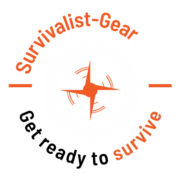
The Best 7 Essential Survival Skills
The best survival gear won’t help you get through without knowing these 7 essential survival skills – mastering the best 7 basic survival skills can make all the difference between life or death.
If you’re like most people, you probably think of survival gear as the key to surviving a disaster. But if you don’t know how to use that gear properly or if you don’t know basic wilderness survival skills, it won’t do you any good. Without skills you’ll have a hard time to survive. In this post, you’ll learn about the essential survival skills that everyone should know. With these skills, you’ll be better prepared to handle emergencies and disasters. So don’t wait – let’s use time wisely and let’s start learning these basic skills today!
There are seven essential skills you must know in order to survive. These include learning to start a fire without matches, learn to find food and purify water, learn to build a shelter, learn to treat injuries and illness and finally, learn to defend yourself and your family. Any one of these skills can be the difference between life and death. Let’s have a look at each one in more detail so that you can be prepared for anything.
1. Learn to start a fire without matches
Making fire is the most basic
Fire starter
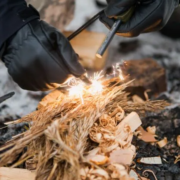
There are a number of different fire starters that can be used in a survival situation, each with its own advantages and disadvantages. A popular fire starter is the lighter. Lighters are relatively durable and easy to use, but they can run out of fuel quickly. The most durable and reliable option is the ferrocerium rod. Ferrocerium rods produce a spark that is hot enough to ignite tinder even in damp conditions, but they can be difficult to use if you don’t have experience with them. Ultimately, the best fire starter for you should be a combination of fire starters depending on your particular needs and preferences. I recommend having a ferro rod either as main fire starter or as a backup. Ferro rods are relatively inexpensive, reliable and should be in every survival kit. Also add some steel wool into zour kit. Steel wool is very flammable and is a great fire starter. Just make sure to practice making fires with it.
Magnifying glass
Another backup option to start a fire without matches is by using a loupe or lens. By focusing the sun’s rays through the magnifying glass, you can create enough heat to ignite tinder. However, this method only works if the sun is bright and there is no wind. If you find yourself in a situation where you need to start a fire but don’t have any matches, don’t panic. There are plenty of ways to get the job done, all of which are relatively simple and easy to learn. With a little preparation, you’ll be able to start a fire in no time, even if you don’t have any matches.
2. Learn to purify water
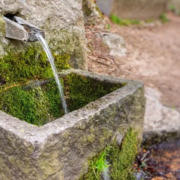
Purifying water is the most important
There are many ways to purify water, some more effective than others. Some of the most common methods of purifying water are:
- boiling
- filtering
- and chemical disinfection (using chlorine or iodine tablets).
It’s important to find a method that works best for you and your needs.
Potable water is essential for both your health and safety. Your body needs potable water to function properly, and contaminated water can make you sick (including gastrointestinal illness, reproductive problems, and even liver damage). In addition, unclean water can contain harmful bacteria or viruses that can cause serious illness. That’s why it’s so important to purify your drinking water. In a disaster situation, there might be no running or potable water available. Your only water source might be standing water.
Factor in water quality
Each water purification method has its own set of pros and cons. The most important factor to consider when choosing a water purification method is the quality of the water you are starting with.
For instance, if you have access to clean water from a river or lake, boiling it for 10 minutes will be sufficient to kill any harmful bacteria. However, if you are starting with water that is contaminated with chemical pollutants, you will need to use a more sophisticated purification method such as reverse osmosis. Other factors to consider include the amount of water you need to purify and the time you have available. For instance, boiling water is a very effective purification method, but it can be time-consuming if you need to purify large quantities of water. On the other hand, chemical treatments can be relatively quick, but they may not be effective against all types of contaminants. Ultimately, the best water purification method for survival is the one that best suits your specific needs and situation.
If you’re lost in the wilderness, find a stream or river and purify the water using a filter, boiling it, or using iodine tablets.
Water filter

- Purchase a quality personal
water filter . - If you’re at home and have access to clean water sources like a sink or faucet, use a filter to remove contaminants
Clean water is essential for our health, and one of the best ways to ensure that we’re drinking clean water is to use a
One of the main pros of using a
There are also some potential cons to using water filters. One is that they can be expensive to purchase and maintain. Additionally, if not properly maintained, water filters can actually become breeding grounds for bacteria. This means that if you’re not careful, you could end up
Boiling water
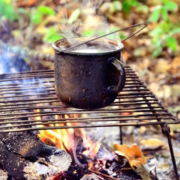
Boil water for one minute to kill any harmful bacteria or viruses. Boiling water is a tried and true method for purifying water. It’s simple and effective, and it can be done anywhere. All you need is a clean pot and clean water. This method is also effective in removing contaminants like lead, arsenic, and mercury.
There are a few things to keep in mind when using this method for water purification:
- First, if the water is cloudy, you’ll want to let it settle before boiling it. This will help to remove any particulates that could cloud the water and make it more difficult to purify.
- Second, this method will not remove chemical contaminants like chlorine or fluoride. If you’re concerned about these contaminants, you’ll need to use a different method of purification, such as a filtration system.
- Finally, boiled water should be allowed to cool before drinking. This will help to prevent scalding.
Overall, this method is a safe and effective way to clean drinking water. It’s inexpensive and easy to do, and it doesn’t require any special equipment. Just
Iodine or chlorine Tablets

- Use iodine tablets to disinfect water if you don’t have access to a stove or fire
Iodine and chlorine are two effective means of purifying water. Iodine tablets are the most common form of water purification for backpacking and camping. They are lightweight and easy to use, making them a good option for travelers. Iodine kills bacteria, viruses, and protozoa, making it safe to drink. However, iodine can cause stomach upset in some people and is not effective against Cryptosporidium. Chlorine tablets are another popular choice for water purification. Chlorine is effective against bacteria, viruses, and protozoa, including Cryptosporidium. Chlorine tablets are more stable than iodine tablets and have a longer shelf life. However, they are heavier than iodine tablets and can leave a bad taste in your water. When choosing a water purification tablet, consider your needs and preferences to decide which option is best for you.
[lasso type=”table” id=”3″ link_id=”65″]
3. Learn how to build a makeshift shelter
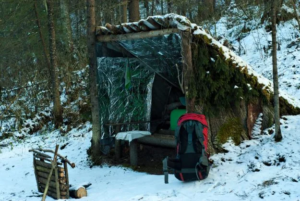
When you find yourself in a survival situation, one of the most important things you can do is to find or build a makeshift shelter to stay warm. Losing too much body heat in cold weather can lead to hyperthermia, which ultimately can lead to death. A temporary shelter can provide you with protection from the elements and help you to stay dry, warm, and out of the wind. It can also give you a feeling of security and help you to stay calm in an emergency situation. In this article, we’ll show you how to build a simple temporary shelter that will do all of these things.
Find a protected location
First, you’ll need to find a suitable spot for your shelter. Look for an area that is out of the wind, has some natural protection from the sun or rain, and is large enough to comfortably accommodate you and your gear. Once you’ve found a spot, it’s time to start building your temporary shelter.
One of the quickest and simplest shelters you can build is called a debris hut. To build a debris hut, all you need is some kind of frame – You can use a pre-existing structure or use two logs or branches placed parallel to each other . Then, pile leaves, dead grass, branches, and any other type of debris around and over the frame until it is completely covered. This type of survival shelter provides good protection from the elements and can be built quickly with minimal tools and skills.
[lasso type=”table” id=”12″ link_id=”66″]
4. Learn how to find food in the wild
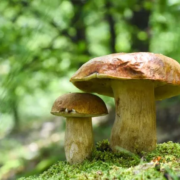
Of course, it’s always best to have food with you when you go into the wild. But if you find yourself in a situation where you need scavenge for food, these tips should help you stay safe and healthy.
While there are many different ways to find food in the wild, some methods are more effective than others. In this blog post, we will discuss some of the best ways of finding food in the wild and provide tips on how to successfully locate sustenance in nature. So, if you’re ever lost or stranded in the wilderness, be sure to read on for advice on how to find food!
Daily minimum calorie intake
It is essential to maintain your daily calorie intake. Depending on your age, weight, and activity level, your daily calorie needs will vary, but the average adult needs around 2000 calories per day. If you are in a survival situation and cannot find food, your body will start to break down stored fat and muscle for energy. This process is known as ketosis and can lead to dehydration and weakness. To avoid ketosis, you need to consume at least the minimum daily intake of calories for your body type. For example, a sedentary adult would need around 1800 calories per day, while an active adult would need closer to 2400 calories. By eating enough calories each day, you can help yourself stay strong and healthy.
Look for edible plants
One effective way to find food in the wild is to look for
[lasso type=”table” id=”11″ link_id=”67″]
Trap or hunt animals
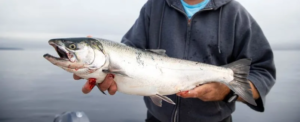
Another way to find food in the wild is to trap or hunt animals. Hunting wild game will require hunting skills. Small animals or small game such as rodents and birds can also be a good source of food in the wild. To trap these animals, you can use snares or traps that you construct yourself or buy from a store. If you want to start trapping then tying knots is a good skill to start with. It is important to check your traps regularly, as an animal that has been caught for too long may start to rot and become inedible.
This can be a more difficult task as it requires you to have some skills and knowledge about hunting and trapping. But if you’re able to successfully catch an animal, you’ll have a ready source of food.
Fishing is of course a good option and easy to learn.
[lasso type=”table” id=”10″ link_id=”68″]
Scavenge
Finally, another way to find food in the wild is simply by scavenging.
Scavenging is an important skill to have if you find yourself in the wild without food. But what exactly should you be looking for? When it comes to food, there are certain things that are more likely to be safe and nutritious than others. Here are a few tips on what to scavenge in the wild:
Fruits and vegetables
Fruits and vegetables are always a good bet. If you can find them growing in the wild, they’re probably safe to eat. Just make sure to wash them thoroughly first.
Nuts and seeds

Nuts and seeds are another good option. Just like fruits and vegetables, they’re usually safe to eat as long as you wash them first. And they’re a great source of protein and essential nutrients.
Insects

If you’re desperate, you can also try scavenging for insects. Some insects are actually quite nutritious, and they’re easy to catch. Just make sure you cook them before eating, to avoid getting sick.
5. Learn Basic First Aid
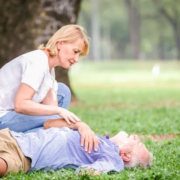
When it comes to emergency preparedness, there are a few key skills everyone should know. Knowing how to provide basic first aid is one of them. In this blog post, we’ll go over some of the most essential medical skills for survival. Whether you’re camping in the wilderness or just trying to be prepared for a natural disaster, these tips will help you stay safe.
A first aid course is a great way to learn some valuable life saving skills. The course will teach you what to do in a variety of different situations, and how to deal with different types of injuries. You will also learn how to use the medical supplies in your first aid kit, and what to include in one. Booking a first aid course is a great way to give yourself peace of mind, knowing that you are equipped with the skills to deal with an emergency.
So don’t wait – learn these essential medical life skills today!
1. How to treat a wound
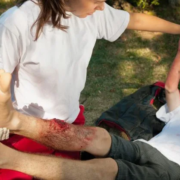
One of the most important survival skills is to know how to treat a wound. Wounds can quickly become infected and lead to serious health problems, so it’s crucial that you know how to properly clean and bandage them. There are several advantages to knowing how to treat a wound:
- First, it can help you avoid infection.
- Second, it can help you keep the wound clean and free of debris.
- Third, it can help you speed up the healing process.
- Finally, it can help you avoid scarring.
Knowing how to treat a wound when surviving can give you a significant advantage in terms of health and safety, as well as peace of mind.
2. How to treat an infection
Suppose you’re in a survival situation and you get a wound. How would you treat it? If you don’t know how to treat an infection, the wound could become infected and make your situation even worse. That’s why it’s important to know how to treat an infection properly. There are several advantages to knowing how to treat an infection. First, it can help you heal faster. Second, it can reduce your risk of developing a more serious infection. Third, it can help you avoid complications from the wound. Fourth, it can make your wound less painful. Finally, knowing how to treat an infection can give you peace of mind in an emergency situation. Be sure to remember these tips on how to treat an infection properly. It could save your life!
3. How to stop a bleeding
There are many advantages to knowing how to stop a bleeding in an emergency situation. First, it can help save a life. Second, it can help prevent further injury. And third, it can give you peace of mind.
Knowing how to stop a bleeding can literally be a matter of life and death. If you are able to stop the bleeding quickly, you can increase the chances of survival for the person who is injured. Every minute that passes without medical attention decreases the chances of survival. So, if you are able to stop the bleeding, you could be saving a life.
In addition to saving a life, stopping a bleeding can also help prevent further injury. If the bleed is not stopped, the person could go into shock or develop an infection. Stopping the bleeding helps to reduce the risk of these complications.
Finally, knowing how to stop a bleed can give you peace of mind. If you
4. CPR and first aid for choking victims
In life, it is always beneficial to know CPR and first aid. If someone has a heart attack or stops breathing, CPR can help to save their life. Similarly, if someone is choking, first aid can help to clear their airway and prevent them from suffocating. There are several advantages to knowing basic medical skills in a survival situation. First, it could mean the difference between life and death for someone in need. Second, it may be the only medical care available in a remote location. Third, it can help to reduce anxiety and stress levels in a potentially dangerous situation. Knowing how to deal, take care and treat injuries gives you the tools you need to potentially save a life, and that is an invaluable skill in any emergency situation and a valuable life skill.
5. When and how to use a EpiPen (if you’ve watched the movie Pulp Fiction you should by now know what an EpiPen is …)
Knowing when and how to use an EpiPen can be a decisive life saving skill. An EpiPen is a device that injects a pre-measured dose of epinephrine, also known as adrenaline, into the body. This hormone is produced naturally by the body in response to stress, but in people with severe allergies, it can be life-saving. Epinephrine works by narrowing blood vessels and increasing blood flow, which can help to relieve symptoms such as swelling, difficulty breathing, and dizziness. It is important to note that EpiPens are only meant for emergency use and should not be used as a substitute for first aid. However, in a survival situation, having an EpiPen on hand can be a lifesaver. Some of the advantages of knowing how to use an EpiPen include:
- Reducing the severity of an allergic reaction
- Preventing anaphylactic shock
- Stabilizing the individual until medical help arrives
In conclusion, while EpiPens are not meant to replace first aid in a survival situation, they can be a valuable tool.
[lasso type=”table” id=”1″ link_id=”69″]
6. Learn self defense skills
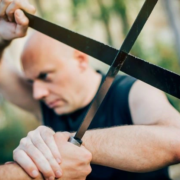
Self defense is a bit of an umbrella term, but when it comes to survival, there are three key skills that you should focus on. First, you need to be able to identify possible threats. This means being aware of your surroundings and knowing what to look for. Second, you need to be able to defend yourself physically. This could involve anything from using your fists to fighting with a weapon. Third, you need to be able to defend yourself psychologically. This means staying calm in a crisis and being able to think clearly. As far as weapons go, there are many options available, but the best self defense weapon is the one that you are most comfortable with and that you can access quickly in an emergency.
There are many different self defense techniques and weapons available, but some are more effective than others. Here are three of the best self defense skills and weapons for survival:
1. The first self defense skill on our list is hand-to-hand combat.
This type of self defense is useful in close quarters situations where you don’t have time or space to use a weapon.
We recommend Krav Maga.
There are many advantages to knowing krav maga, a fighting style that originated in Israel. One of the most significant advantages is that krav maga is an incredibly effective form of self-defense. Unlike other martial arts, which often emphasize sportsmanship and fair play, krav maga is designed to incapacitate an attacker as quickly and efficiently as possible. This makes it ideal for anyone who wants to be able to defend themselves in a real-world situation. In addition, krav maga is relatively easy to learn and does not require years of dedicated training to become proficient. As a result, it is a great option for busy people who want to be able to protect themselves and their loved ones. Finally, krav maga is also a great workout and can help to improve your overall fitness level. So if you are looking for an effective way to defend yourself or simply want to get in shape, krav maga is definitely worth considering.
2. Firearms training.

Knowing how to properly use a firearm can be a lifesaving skill in a survival situation. Firearms can be used for self defense, hunting, and other purposes. However, it is important to note that firearms should only be used as a last resort, as they can also be dangerous if not used correctly.
3. Pepper spray.

Pepper spray is an incredibly effective self defense weapon, especially against multiple attackers. It can temporarily blind and disable an attacker, giving you the time you need to escape or find help.
4. Knife fighting
Knife fighting is a dangerous but potentially useful self defense skill.
[lasso type=”table” id=”6″]
[lasso type=”table” id=”8″]
[lasso type=”table” id=”7″]
7. Avoid danger
Each of these self defense skills and weapons can be useful in a survival situation. However, it is important to remember that the best way to avoid danger is to:
1. Awareness
One of the most important self defense skills is simply being aware of your surroundings. Pay attention to who or what is around you, and trust your instincts if something feels off. This can help you avoid dangerous situations altogether. You can also take courses and learn to increase your situational awareness.
2. Avoid
There’s an old saying that the best way to avoid danger is to avoid dangerous situations altogether. And while that might not always be possible, there’s definitely some truth to it. After all, if you can avoid putting yourself in harm’s way, your chances of survival go up dramatically. Of course, that doesn’t mean you should never take risks. But it does mean that sometimes, it’s smarter to play it safe and steer clear of potential danger. The way you dress and your appearance can also play a factor not drawing attention and avoiding danger. Think, for example, of not wearing jewelry and watches when travelling to poorer countries or tourist hot spots.
3. Diffuse
If you find yourself in a situation where someone is trying to hurt you, it’s important to stay calm and try to diffuse the situation. This means staying calm yourself and not escalating the situation. Try to reason with the person and de-escalate the situation if possible. Only resort to violence as a last resort.
4. Fight back
If all else fails and you find yourself in a fight, it’s important to fight back with everything you’ve got. Throw punches, kicks, and elbows with all your might and aim for vulnerable areas like the eyes or throat. The goal is to incapacitate your attacker so you can get away safely.
Learning self defense skills can give you the confidence and ability to defend yourself and to know when it’s better to run.
Conclusion
So there you have it – the seven essential survival skills that you should master. But don’t stop here! The key to being truly prepared is to keep learning and expanding your knowledge base. There are many classes and online courses available on these topics, so start today and get skilled in fire-starting, water purification, shelter-building, foraging, and first aid. It might just save your life one day. Try to combine the survival skills you want to master with your outdoor activities and practice them in a fun environment and activity.
If you want to know more about which essential items should be part of your bug-out bag or survival kit you can read my article Why going cheap on essential survival gear might cost you dearly
So what are you waiting for? Visit our shop, get started on your emergency preparedness:
- Choose between ready-made survival kits or assemble your own survival kit.
- Visit our literature section and educate yourself about survival skills, urban survival, urban prepping, edible wild plants or how to navigate without the north star.
